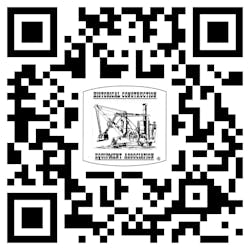Several companies manufactured wheel loaders during the 1950s when the technology was being established. Mixermobile Manufacturers introduced the first articulated frame wheel loaders, its LD5 and LD10 models, in 1955, but the concept didn’t really take off until Euclid’s line was introduced in 1959. Once it did, it became the standard design for these machines. Within a few years, loaders of 10-cubic-yard capacity and larger were coming into widespread use in heavy earthmoving applications.
But before articulation took off, wheel loaders were built on rigid, nonarticulating frames. Although a number of companies built rigid- or straight-frame loaders, only a handful produced machines that were of especially noteworthy size. Let’s look at the most popular.
About the HCEA
The Historical Construction Equipment Association (HCEA) is a 501(c)3 nonprofit organization dedicated to preserving the history of the construction, dredging and surface mining equipment industries. With over 3,500 members in a dozen countries, our activities include operation of National Construction Equipment Museum and archives in Bowling Green, Ohio; publication of a quarterly magazine, Equipment Echoes, from which this text is adapted, and hosting an annual working exhibition of restored construction equipment. Individual annual memberships are $45 within the U.S. and Canada, and $65 elsewhere.
Our next International Convention and Old Equipment Exposition will be September 18-20, 2024, at the National Construction Equipment Museum, Bowling Green, Ohio. We seek to develop relationships in the equipment manufacturing industry, and we offer a college scholarship for engineering students.
Information is available at www.hcea.net, or by calling 419-352-5616 or e-mailing [email protected].
About the Author
Tom Berry
Tom Berry is archivist for the Historical Construction Equipment Association (HCEA). Information is available at www.hcea. net, or by calling 419.352.5616 or e-mailing [email protected].
